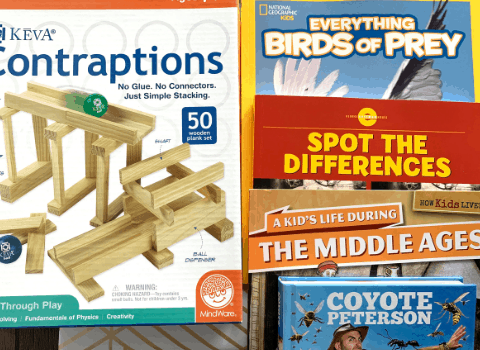The Best Way to Choose Curriculum for Kids Who Learn Differently
If your children have learning differences, choosing homeschool curriculum can be a challenge. But Shawna shares one simple way to ensure you get it right.
Nine years ago this month, I ordered my very first homeschool curriculum. It was an all-in-one, everything-you-need-in-these-boxes type of curriculum and I was so excited. I unpacked the boxes with the enthusiasm of a kid opening presents on Christmas morning.
I carefully put together my lesson plan binders and organized my bookshelves. Every once in a while, I would glance through a workbook or two, excited to get started.
Then, we began homeschooling.

It didn’t take long for my children to rebel. To their credit, they tried. Their little five- and eight-year-old faces looked up at me with an expression that showed they knew I really, really wanted to do all the things. They tried to appease me.
But within a week, it was clear me that they both needed a different approach. I felt like a total failure, only five days in.

Almost a decade later, I have to smile looking back on those early days. Back then, I didn’t know about any of my boys’ learning differences. I didn’t realize that recreating school at home would have the same outcome as school itself had for them. (Not a good fit, to say the least.)
I didn’t know that I could take advantage of the freedom homeschool offers. That I could help my boys learn in ways that worked best for their strengths and differences.
I only knew that the only person this amazing, beautiful curriculum was working for was me.
Choosing A Homeschool Curriculum For Children With Learning Differences
To encourage you (and save you unnecessary heartache), I’m sharing my single best recommendation for choosing curriculum for a child with learning differences.
Here it is.
Don’t Start with the Areas of Struggle
Don’t start with your child’s area of weakness. This one tip has totally changed the way I choose curriculum and plan for our homeschool year.

It’s easy to focus on your child’s area of weakness and what he is not able to do. However, I have found so much more success in choosing and developing a learning plan based on areas of strength first.
For example, my youngest has a knack for science and loves to learn anything and everything related to it. So, I start each year with a search for the best science options for him. My oldest loves history, so for him, I start with his history curriculum.

This approach has a couple of benefits. The first is that I feel excited and encouraged right away. More importantly, I can take the subject I know they will love and use it as a foundation for all other learning.
Practically, this means I review the science program for my youngest and then think of ways I can incorporate reading practice (an area of struggle). I find reading samples that have to do with various biomes and animals. I pull vocabulary words and even copy work out of his science books.

While it requires a little bit of faith, I have found that strength-based homeschooling works. And, keeping my sons’ best subjects in mind as I select their curriculum each year has never failed.

Using areas of strength means less resistance, more focus, and an overall learning environment that inspires confidence in my children, no matter what their diagnoses and differences.
Do you have any tips for selecting curriculum for a child with learning differences?
You Might Also Like
Shawna Wingert is a special education teacher turned writer, speaker and consultant. She is also a homeschooling mom of two brilliant boys with differences and special needs. Shawna has written four books for parents of special needs – Everyday Autism, Special Education at Home, Parenting Chaos and her latest, Homeschooling Your Child With Special Needs. She has also been featured in special needs discussions on Today.com, The Mighty, The Huffington Post and Autism Speaks. You can find her online at DifferentByDesignLearning.com. You can follow Shawna and Different By Design Learning on Pinterest, Facebook and Instagram.






